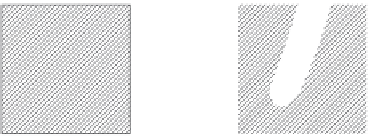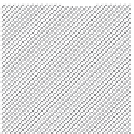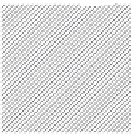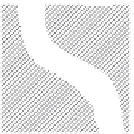Geoscience Reference
In-Depth Information
Si
3
AlO
10
Fe
3
(
OH
)
2
K + H
+
+
3
4
O
2
+
5
H
2
O
Æ
1
__
__
2
Si
2
Al
2
O
5
(
OH
)
4
+
3
FeOOH + K
+
+
2
Si
(
OH
)
4
Silicon and potassium are eliminated in solution.
The material is reorganized: fissures appear in the dry period
and are filled up with goethite in the wetter period; these are
the
partitions
. At times this goethite migrates into the compart-
ments and crystallizes there in the form of haematite, giving rise
to pisolites (or pisoliths). At the same time desilication continues
at the boundary of the fissures where kaolinite is transformed
into gibbsite. The partitions become
ferrigibbsitans
.
Higher up, the reduction in volume can be as much as 30 per cent.
This almost homothetic contraction is not easily seen because it affects
nearly all the constituents. In sum, beyond the appearance, there is
at the same time loss of matter, mineralogical transformation and
redistribution of constituents.
Pedotubules
are created by termites that do considerable work: cutting
of galleries to a depth of several tens of metres (actually to the water
table), ingestion of particles of diameter up to 0.8 mm, regurgitation
and elaboration of pellets that are their bricks. This pedoturbation is
manifested by the progressive disappearance of the original structure
of the parent material and its replacement by an organization
(disorganization rather!) sometimes called
pedostructure
.
The lithostructure/pedostructure transition
Original saprolite
Opening of a termite hole
Sealing
Reorganization,
segregation of iron
Opening of another hole
And so on…
Fig. 5.2
Formation of pedotubules and acquisition of pedostructure in saprolite (from Es-
chenbrenner 1988).









































